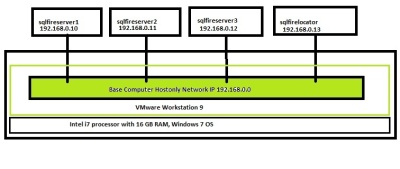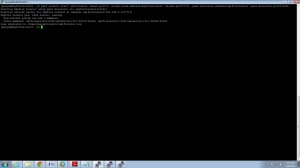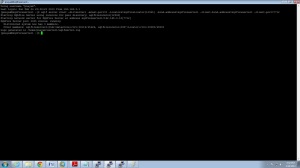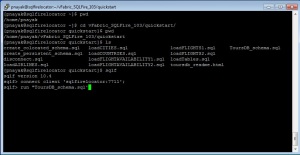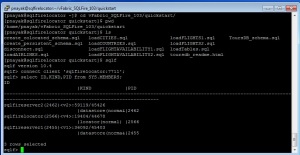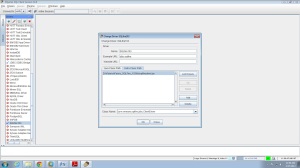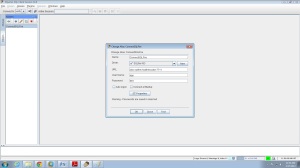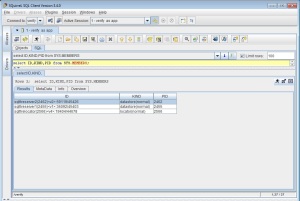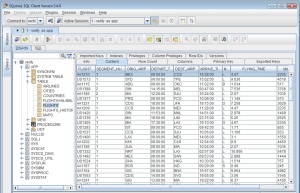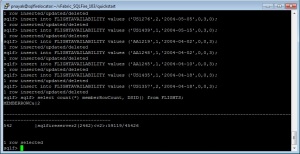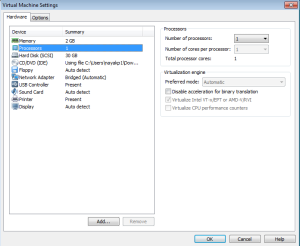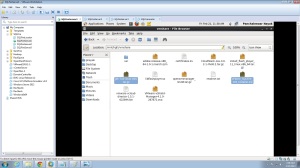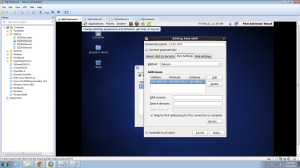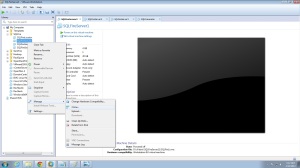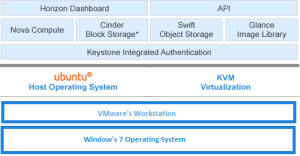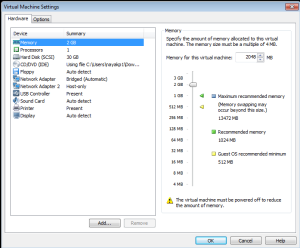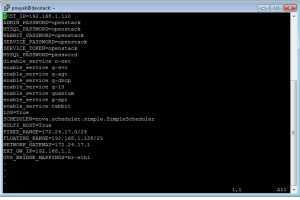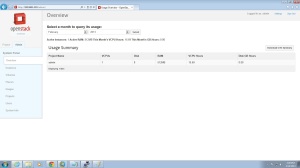Here is the overall Architecture diagram of the VMs network connection on the Physical Host Machine.
- Prepare the SQLFire Cluster
1.Login to SQLFireLocator (192.168.0.13) with the username and password
$mkdir locator
Start the Locator with the following command.
$sqlf locator start -dir=locator -mcast-port=0 -client-bind-address=sqlfirelocator -client-port=7711 -peer-discovery-address=sqlfirelocator -peer-discovery-port=12345
if everything you have configured correctly then the locator will star as shown in the screenshot.
2.Login to the SQLFireServer1 (192.168.0.10) with username and password
$mkdir server1
Start the first server
sqlf server start -dir=server1 -mcast-port=0 -locators=sqlfirelocator[12345] -bind-address=sqlfireserver1 -client-bind-address=sqlfireserver1 -client-port=7712
3.Login to the SQLFireServer2 (192.168.0.11) with username and password
$mkdir server2
Start the second Server
sqlf server start -dir=server2 -mcast-port=0 -locators=sqlfirelocator[12345] -bind-address=sqlfireserver2 -client-bind-address=sqlfireserver2 -client-port=7712
Don’t start the third server yet.
Lets create some database tables.
Login to the locator again,I assume you have installed SQLfire on your home directory .For me it is /home/pnayak/vFabric_SQLFire_103,now create the database using sqlf command and running the ToursDB_schema.sql file as shown.
Run this query to see the memebrs in the cluster.
sqlf> select ID,KIND,PID from SYS.MEMBERS;
sqlf> select ID,KIND,PID from SYS.MEMBERS;
ID |KIND |PID
—————————————————————————————————————————-
sqlfireserver2(2462)<v2>:59119/45426 |datastore(norma&|2462
sqlfirelocator(2566)<v4>:19404/44678 |locator(normal) |2566
sqlfireserver1(2455)<v1>:36092/45403 |datastore(norma&|2455
You also can run the same query using SQuirrel. You can install SQuirrel on the Base Windows 7 OS and run it from there and connect to the Locator and run the query.
SQL GUI Client.
Download the SQuirrel SQL Client installer jar file from http://squirrel-sql.sourceforge.net and then install it using java -jar command.
java -jar squirrel-sql-<version>-install.jar
Run the query via SQuirrel.
Add sqlfireclient.jar as driver.
Create the Alias to connect the SQLFire Server Locator.
Now run the Query.
Now let’s load some data to the replicated tables created on SQLFire Database.
again connect to the SQLfire DB.
sqlf> connect client ‘sqlfirelocator:7711’;
sqlf> run ‘loadTables.sql’;
after the execution of the query you can verify it on SQurrel GUI as shown below.
You can execute the query to see the DATAPOLICY of the APP Database.
select TABLENAME,DATAPOLICY from SYS.SYSTABLES where TABLESCHEMANAME=’APP’;
Run the following query to know the number of rows you have in the FLIGHTS table.
select count(*) memberRowCount, DSID() from FLIGHTS;
note the number is 542.
Now Stop SQLFireserver2.
login to SQLFireserver2 (192.168.0.11)
Execute the following command.
$ sqlf server stop -dir=server2
Now Start third Server
Login to SQLFireServer3 (192.168.0.12)
$mkdir server3
$sqlf server start -dir=server3 -mcast-port=0 -locators=sqlfirelocator[12345] -bind-address=sqlfireserver3 -client-bind-address=sqlfireserver3 -client-port=7712
Finally stop the server SQLFireServer1
login to SQLFireServer 1 (192.168.0.10)
Execute the following command.
$ sqlf server stop -dir=server1
At this point, the servers in SQLFireserver1 and SQLFireserver2 are stopped, and the SQLFireserver3 is running.
Repeat this command in sqlf to size the FLIGHTS table
select count(*) memberRowCount, DSID() from FLIGHTS;
You can check if the number is same as before i.e 542.
So what we did in the above procedure ? Why we stopped and started the servers ? To summarize the process . First we started Servers one and two, loaded data into them then we stopped server 2 ,we started server 3 and joined it to the cluster, then Stooped the server 1.
From the above procedure it was clear that SQLFire servers can be joined to the cluster and removed from the cluster dynamically but data remains and the locator takes care of connecting to the right existing server in the cluster to retrieve data.
Stop the Cluster
sqlf shut-down-all -mcast-port=0 -locators=sqlfirelocator12345] -bind-address=sqlfireserver1
